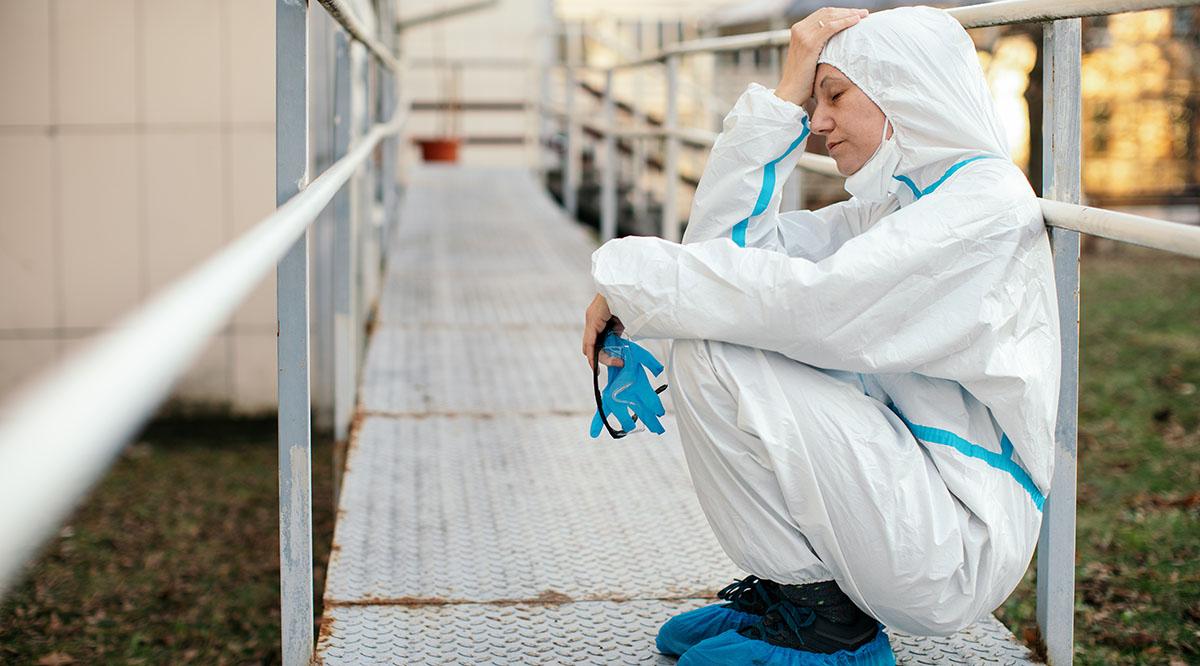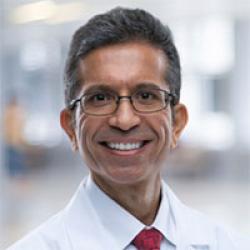The year was 2007, and I was a surgical resident at the University of Nebraska Medical Center.
Joseph Stothert, MD, PhD, was the chief of trauma service.
“Dr. Kaushik, did you see the consult in the ER?” Dr. Stothert looked into my eyes as if staring into my soul.
“Not yet, Dr. Stothert,” I replied, picking up the patient’s chart. “They paged me two minutes ago.”
Dr. Stothert shook his head and headed to the ER, where he saw the patient even before I did.
Joseph Stothert was a phenomenal trauma surgeon, the medical director of the Omaha Fire Department, and a brilliant leader who saved countless lives throughout Nebraska. He died by suicide in March 2021 after spending more than a year on the front lines in the war against COVID-19. For me and countless other residents that Dr. Stothert trained, his death will never be just a tragic statistic among so many during this pandemic. Rather, he will be remembered as one of the finest surgeons in the country, whose skill was matched only by his kindness and compassion.
A recent Washington Post/Kaiser Family Foundation survey of 1,327 front-line health care workers in the United States during the COVID-19 pandemic revealed that medical burnout has reached epidemic proportions. An overwhelming 55% of front-line health care workers reported burnout (defined as mental and physical exhaustion from chronic workplace stress), with the highest rate (69%) among our youngest staff — those ages 18 to 29. That same age group also reported the highest negative impact of the pandemic on their mental health (75%), though a majority of all health care workers (62%) reported some mental health repercussions.
Multiple survey data now show that health care workers responsible for providing direct care for COVID-19 patients are more likely to have depression, anxiety, and mental distress. These mental health issues may be related to psychological distress from witnessing COVID-19-related deaths, extra-long work hours, and work-life imbalance. Health care workers have been working nonstop for the past 15 months without a full appreciation of their sacrifices. Many have suffered financial distress as well, including salary cuts and furloughs.
Furthermore, systemic racism, violence against Asians, and child care crises for women in medicine have taken a tremendous toll on the mental and physical health of these minoritized groups during the pandemic. For women in medicine, there has been no respite from work, whether it’s on the front lines with COVID-19 or solving their child care challenges.
When experienced in such a sustained and extreme form, burnout can have devastating consequences — not only on the workforce but also on patients. Burned-out doctors and nurses can even threaten patient safety and the quality of health care delivered.
The Washington Post/Kaiser Family Foundation survey found that 26% of health care workers in hospitals are angry and 29% have considered leaving the medical field. These are the warning signs of a smoldering epidemic of burnout among front-line medical professionals.
National, institutional, and departmental leadership should not put the burden squarely on staff to “do meditation apps, practice mindfulness, get 10% off on gym memberships, or count your steps for wellness.” Instead, they must recognize the insidious nature of burnout and develop the necessary tools to prevent and treat it.
Five practical changes we can implement rapidly
1. Recognizing burnout is the first step toward finding solutions. We need to have a mindset of “we are all in this together.” It can start at the departmental level with peer-to-peer coaching sessions during which faculty, residents, and trainees have an opportunity to voice their feelings and get advice from peers and mental health experts on coping with burnout and promoting wellness.
It is ingrained early on in medicine to “keep doing what you are told and never complain.” If you complain, you are seen as not resilient. This mindset is harmful and can create feelings of despair and self-judgment. How can we be compassionate toward our patients when we are so critical of ourselves? By developing a bond through shared experience, peer-to-peer coaching can assist someone going through feelings of loneliness and isolation. This strategy can also remove the hierarchy typically seen in medicine, especially in surgical specialties.
I am a urologic cancer surgeon with a focus on surgery for advanced kidney cancer. Depending on the complexity of the cancer, these are long, tedious surgeries — sometimes taking eight to 12 hours. I have experienced burnout on multiple occasions. Acknowledging and discussing it is the first step. We as health care workers should understand that it is OK to be vulnerable, and a system of peer-to-peer coaching can help us understand these vulnerabilities.
There is good data that people who experience adversity or a traumatic event often find a sense of personal growth as they work through their trauma. This phenomenon is called “post-traumatic growth.” We see this in world-class endurance athletes who have psychological support and can build upon their strengths to surpass perceived physical and emotional limits. The only difference between health care workers and endurance athletes is that the latter have support from their peers, coaches, and psychologists. Health care workers, by contrast, often grapple with their trauma isolated and alone. We can change that.
2. A mental health resources page on each department’s website with a list of outreach programs and contact information for anonymous psychological health support would be the next step. A recent Medscape report found that almost 40% of U.S. physicians had no workplace support to deal with grief and trauma. Health care workers are working extra-long hours, and some of them may not have the time or feel safe discussing their emotional and mental health with peers. For them, an anonymous method of accessing mental health resources is critical.
3. Program directors, associate program directors, and faculty members should be offered training on supervising with empathy and fostering a genuine dialogue with their trainees (medical students, residents, and fellows) on burnout and wellness. We need to move away from the perfunctory “How are you doing? — I’m fine” model to an active engagement in conversation. Trainees deserve our full attention toward their emotional and mental health, even if it is for only a few minutes. Being “present” in conversations with trainees is a genuine act of kindness as it demonstrates that their well-being is our priority. “Tell me how you are really doing through this pandemic? You have my undivided attention” is a powerful open-ended question and can help trainees feel an immediate bond with their faculty. Providing trainees a safe place by actively listening and then following through with action is the single most critical thing we can do as mentors.
4. Institutional leadership needs to implement a comprehensive action plan to promote wellness and prevent burnout. This may require a culture change from dealing with acute mental health issues to promoting programs to improve physician wellness and resilience. In 2019, the American Medical Association launched the “Joy in Medicine Recognition Program,” which encourages institutional leadership to improve physician wellness and reduce burnout by implementing workplace changes that improve practice, teamwork, and peer support efficiency.
5. Hospital leadership should establish a provider wellness committee from different departments and include physicians and advanced practice providers. Each department could potentially have one “wellness champion” who could discuss issues specific to that department but who could also be the wellness contact for other faculty and residents in the department. Hospitals can work with the provider wellness committee on prioritizing space — a dining room, small gym, or meeting room — for wellness-related conversations. If these minor changes are meaningful and enhance health care workers’ wellness, hospitals should investigate the creation of electronic-free environments. These can be modeled after airport sleeping/nap pods. Federal, state, and city governments should support such programs and promote research into optimizing health care worker wellness. Such collaborative efforts could even advance the science of burnout during this pandemic.
In the first year of the pandemic, more than 3,600 U.S. health care workers died. Anthony Fauci, MD, chief medical advisor to the Biden administration, said it best: The deaths of so many health care workers due to COVID-19 are “a reflection of what health care workers have done historically, by putting themselves in harm’s way, by living up to the oath they take when they become physicians and nurses.”
Health care workers are an indispensable and resilient part of the nation’s workforce — and have saved countless lives, before the pandemic and during it. Understanding medical burnout and having strategies at the organizational level to prevent it will help avoid future catastrophes. We need to get the system of “preventing burnout and promoting wellness” up and running before the next pandemic happens. It will also be an authentic tribute to those “COVID-19 warriors” like Dr. Stothert.

